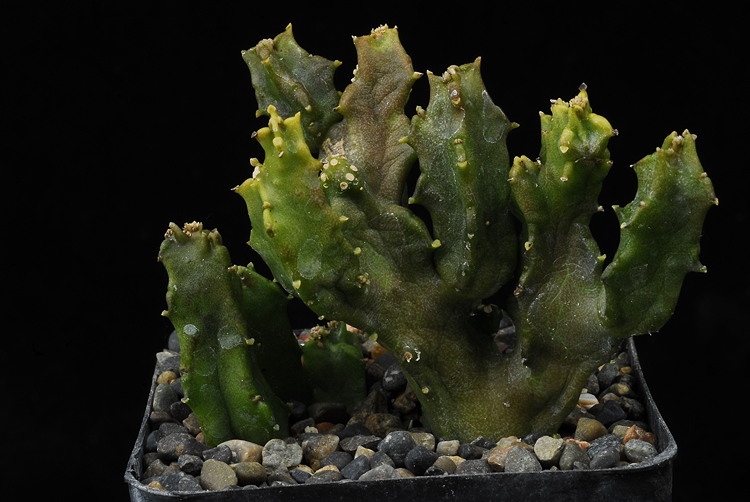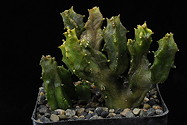Succulents in the milkweed family (formerly the Asclepiadaceae, now combined with the Apocynaceae) have wonderfully diverse flowers despite their apparent, five-petaled simplicity. This floral diversity is their primary appeal as collectable ornamentals. This is despite their often-challenging cultural requirements. It is also responsible for considerable attention from taxonomists through history and the resultant controversies regarding classification and naming. For small plants often found creeping in the shade of other vegetation, and their propensity to have fetid-smelling flowers to attract fly pollinators, this level of attention may seem disproportionate. One is reminded of the famous quote by British biologist J. B. S. Haldane (1892-1964) regarding the diversity of beetle species; The Creator “must have an inordinate fondness for beetles.” One could paraphrase that ‘taxonomists have an inordinate fondness for stapeliads’ based on the taxonomic controversies they have engendered. This offering provides a case in point. It was first described by Lavranos as a Caralluma (Fl. Pl. Africa 44(3-4): t. 1743 (1977). Nearly a couple of decades later, in his attempt to bring some sense to this very diverse genus, Darrel Plowes split the genus into 16, placing this species in Sulcolluma, distinguished by tubercles with a flattened, epaulet-like upper surface, often grooved (i.e. with a sulcus) and tipped with tiny, fugacious leaves. This recognized a useful diagnostic characteristic for the new genus. In a dramatic swing in the lumping direction a dozen years later, Peter Bruyns transferred it, along with all the other stapeliad genera (!), into the megagenus Ceropegia. Current treatments have come down somewhere in the middle. The 2002 treatment of the family in the Asclepiadaceae volume of the Illustrated Handbook of Succulent Plants, considers this taxon to be a synonym of Caralluma hexagona, albeit with the comment that this is “An extremely variable species, which can possibly be split up into several taxa” [again!]. Meanwhile, Plants of the World Online chooses to place it in another Plowes genus, Monolluma as Monolluma hexagona. We are choosing to offer it as Sulcolluma in honor of the ease of recognition of its stem morphology, and the original distinction by Lavranos. We offer rooted cuts of HBG 48485, a plant received December 5, 2014 from Myron Kimnach (2001.17). This has proven to be an unusually durable stapeliad, tolerating standard succulent care among other succulents and cacti in our greenhouse where temperatures range into the triple digits in summer and down to the 40s°F in winter. This is J. Lavranos & S. Collenette 20440A collected April, 1982: Saudi Arabia; Jabal Fayfa, 71 km NE of Jizan. $15.

Published in the Cactus and Succulent Journal, Vol. 97 (2), Summer 2025

